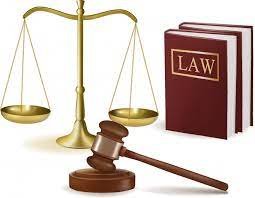Introduction:

Resolving civil disputes is an integral aspect of maintaining a fair and just society. The civil dispute resolution process is designed to provide individuals and entities with a systematic and equitable way to address conflicts outside of the criminal justice system. This article aims to shed light on the step-by-step process involved in resolving civil disputes.
1. Initial Assessment and Consultation:
The journey begins with an initial assessment of the dispute. Parties involved often seek legal advice to understand their rights and obligations. Consultation with legal professionals helps in evaluating the merits of the case, exploring potential resolutions, and determining the most suitable dispute resolution method.
2. Mediation as a Voluntary Option:
Mediation is a voluntary and informal process wherein a neutral third party, the mediator, facilitates communication between the disputing parties. The goal is to help them reach a mutually acceptable agreement. Mediation is often preferred for its collaborative nature and the opportunity for creative problem-solving.
3. Filing a Lawsuit:
If mediation does not yield a resolution, the next step is initiating legal action by filing a lawsuit. The plaintiff, the party bringing the suit, files a complaint outlining the grievances. The defendant, in turn, responds to the complaint. This formalizes the dispute and sets the stage for court proceedings.
4. Discovery Process:
The discovery phase allows both parties to gather relevant information and evidence to support their claims. This involves document requests, depositions, and interrogatories. Discovery ensures that all involved parties have access to the necessary facts, promoting transparency in the legal process.
5. Pre-Trial Settlement Negotiations:
Before proceeding to trial, the parties often engage in settlement negotiations. Settlement discussions may occur directly between the parties or with the assistance of legal representatives. Resolving the dispute at this stage can save time and resources compared to a full trial.
6. Trial Proceedings:
In the absence of a pre-trial settlement, the dispute progresses to trial. During the trial, both parties present their cases, witnesses testify, and evidence is examined. A judge or jury then renders a decision based on the presented information. The trial is a structured process aimed at ensuring a fair and impartial resolution.
7. Post-Trial Remedies and Appeals:
Following a court decision, the prevailing party may seek remedies such as damages or specific performance. Dissatisfied parties have the right to appeal the decision, bringing the case to a higher court for review. The appellate process assesses whether legal errors occurred during the trial.
8. Enforcement of Judgment:
Once a final judgment is obtained, the prevailing party must take steps to enforce the decision. This may involve court orders for payment, property transfer, or other remedies as outlined in the judgment.
Conclusion:
In conclusion, the civil dispute resolution process is a multifaceted journey that aims to provide fair and just outcomes for conflicting parties. From initial assessment to enforcement, each step is crucial in ensuring that disputes are resolved in a manner that upholds the principles of justice and equity. Understanding this process empowers individuals and entities to navigate civil disputes with confidence and clarity.









